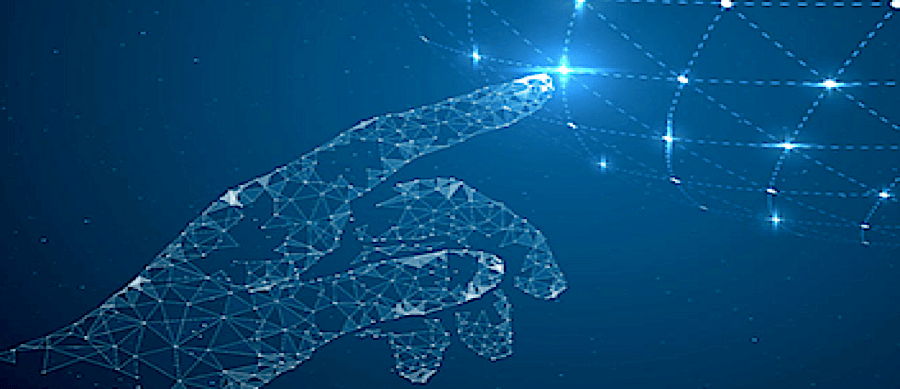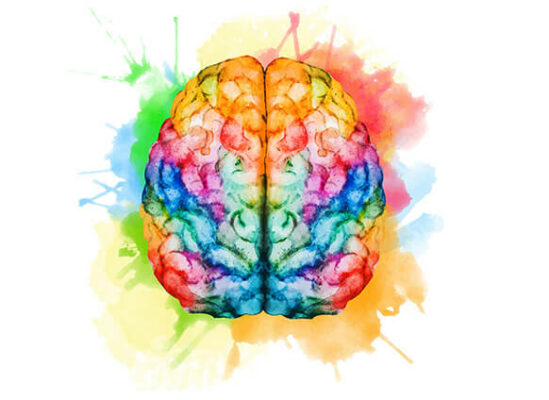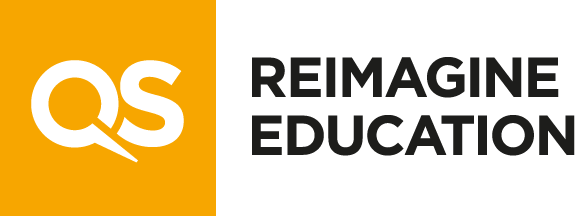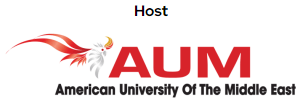THE EDTECH PODCAST #146 – ONLY CONNECT
EDITORIAL OVERVIEW – ISSUE 33
Howard B. Esbin is co-creator of the Prelude Suite, an experiential learning platform that enables virtual project teams to practice distributed leadership and strengthen soft skills in a compact creative process.
In the second of a two-part series, he seeks to reimagine the Master of Arts qualification, and to provide some frameworks and exemplars by which that might be achieved.
“Civilization is embodied social imagination”
Brian Eno
Prologue is Past
This essay examines several new educational programs emerging in response to immense global changes. These programs promote a holistic approach to learning and mastery. As in the 12th Century, the fundamental goal of a 21st-Century Master of Arts curriculum is to enable students to become “multidimensional thinkers”. Such thinkers should be able to understand the parts and the whole together in context. They should be able to discern broader context, and to put their knowledge to work after graduating. This once meant mastering the Trivium and Quadrivium.
However, the world looks different viewed from the International Space Station then from a Medieval university classroom. People today understand we live on a small “blue pale dot”, lost within the immensity of outer space. Thanks to science and technology, the industrialized world now also understands what First Nation peoples have always known naturally and never forgotten. Everyone and everything is interconnected.


World Views
In 1922, Teilhard de Chardin, Jesuit priest and philosopher, introduced the idea of a “Noosphere”, which he described as “a sphere of human thought encircling the earth […] as much part of nature as the […] atmosphere, and biosphere.” In 1962, Marshall McLuhan, philosopher and professor, introduced the concept of a ‘Global Village’, given the “instantaneous movement of information from every quarter to every point at the same time”.[1]
In 1974, Theodor Holm Nelson, an information technology pioneer, philosopher and sociologist, introduced the term ‘Intertwingularity’. “Everything is deeply intertwingled […] Hierarchical and sequential structures, especially popular since Gutenberg, are usually forced and artificial. Intertwingularity is not generally acknowledged —people keep pretending they can make things hierarchical, categorizable and sequential when they can’t.”[2]
According to the latest Bulletin of the Atomic Scientists: “Humanity now faces two simultaneous existential threats, either of which would be cause for extreme concern and immediate attention […] These major threats – nuclear weapons and climate change – were exacerbated this past year by the increased use of information warfare to undermine democracy around the world, amplifying risk from these and other threats and putting the future of civilization in extraordinary danger. There is nothing normal about the complex and frightening reality just described.” [3]
It is imperative that educational institutions adapt and evolve if they are to remain responsive and relevant.
“When information was scarce and knowledge acquired only through another human, the value of that stock of knowledge was high and the aggregation of that wisdom in a university degree was proxy for a good job and a stable career. As access to information becomes nearly ubiquitous (70% of the planet will be connected by […] smart phone by 2020) the value of a stock of knowledge drops and related value of that bundled wisdom declines. We must move from transferring existing knowledge and predetermined skills to new sets of professionals and develop agile learning mindsets where we stream knowledge […]We need to become net-generalists focusing on the uniquely human skills of creativity, collaboration, and empathy.” [4]
Connecting Dots
The ability to discern what is salient – the patterns created by the connected dots – within a complex mass of information has become increasingly valuable as a skill.
E.O. Wilson, biologist and philosopher, wrote: “We are drowning in information, while starving for wisdom. The world henceforth will be run by synthesizers, people able to put together the right information at the right time, think critically about it, and make important choices wisely.” [5]
It’s worth noting that like the word ‘art’, ‘synapse’, ‘yoga’, ‘algebra’, and ‘conscience’ all share the same basic meaning. Each signifies joining things together to create greater wholes within ever-wider frames of understanding and knowledge. “In 1964, neuropsychologist Roger Sperry drew an analogy between neurons and ideas: Ideas cause ideas and help evolve new ideas. They interact with each other and with other mental forces in the same brain, in neighboring brains, and thanks to global communication, in far distant, foreign brains.” [6]
Global Education & Ethics
The 2008 financial crash cost $19.2 trillion dollars in lost household wealth, according to the US Treasury Department. This altogether avertable tragedy was attributed to the excessive greed of executives in the financial sector. Consider the following 2008 NY Times headline, “Big Three CEOs Flew Private Jets to Plead for Public Funds. Auto industry close to bankruptcy, but they still get pricey perk.” [7]
That same year, an article appeared in the Harvard Business Review: “It’s Time to Make Management a True Profession” by Professors Rakesh Khurana and Nitin Nohria.” [8] Calling for a new ethical paradigm for businesses, the authors wrote that “to regain society’s trust, we believe that business leaders must embrace a way of looking at their role that goes beyond their responsibility to the shareholder to include a civic and personal commitment to their duty as institutional custodians”.[9]
The authors suggested developing a “Hippocratic Oath for Managers.” A group of Harvard M.B.A. students were inspired and produced one. To date, ten years later, more than 10,000 students attending over 100 institutions internationally have taken the MBA Oath.[10]
While this is laudable, the overall impact is limited. Consider that since 2010 in the United States alone, about 200,000 students graduate annually with an MBA. In India alone, there are 5,500 business schools.[11] Where do these programs and students stand in relation to adopting an MBA Oath ethos? The question essentially holds for all Master Degree Programs.
What really has changed in the past decade? Consider the following January 2019 article from the Guardian: “A common thread runs through the world’s modern banking scandals. Greed – unbridled, incentivised, and unchecked by timid regulators – unites them all. You can see it in the worst excesses of the global financial crisis. It’s there in the post-2008 Irish collapse, and more recent revelations about shocking misconduct by Californian banking giant Wells Fargo”.[12]

Soft Skills
Those CEOs who flew to Washington in 2008 on a private jet costing $20000 instead of incurring a more modest coach fare ($500), were judged to possess an “EQ Gap”, as evidenced by the following NBC reporting.
“When executives from the Big Three auto makers hopped their individual jets in November 2008 to fly from Detroit to Washington and throw themselves at the feet of Congress to beg for federal financial support, we all marveled at the disconnect […] They never thought to find that emotional quotient, their EQ. Asking […] for money while traveling in imperious style. And then they were taken aback with the public outcry. Remember, it wasn’t their IQs people were questioning as much as their EQs […] therein lies the EQ gap”, said Dr. Nancy Snyderman, NBC Chief Medical Editor. [13]
Emotional Quotient, social & emotional literacy, and soft skills are all elements of the same basic skill set. That skill set has become increasingly central to business success and innovation while maintaining ethical standards and a moral compass.
According to Google, for example, employee success includes essential soft skills including: “being a good coach, communicating and listening well, possessing insights into other points of view, being supportive of one’s colleagues, critical thinking and problem solving, and being able to make connections across complex ideas. It’s these fundamentally human emotional and social skills which should be nurtured, developed and celebrated as the key to future success for students and society in general.”[14]
“By 2030, demand for human skills – social and emotional soft skills – will grow across all industries by 26% in the U.S. and by 22% in Europe.”[15]
Many universities do place importance on teaching students’ soft skills in varied faculties, departments, and curricula. However, “the issue goes much deeper: it needs to be tackled across the entire education system, so that by the time students reach university level they are already familiar with the importance of, and the qualities needed to develop, these essential skills”.[16]
Here, concerns of pragmatism and concerns of altruism are aligned. “Candidates who can demonstrate higher cognitive skills, creativity and the ability to process complex information, together with adaptability and likeability, can expect greater success throughout their careers”.[17]

Exemplars
The following section briefly introduces three educational programs from Canada, the USA, and the United Kingdom that exemplify a new holistic vision and ethos of learning and mastery: one attuned to the global challenges and demands of this era.
International Masters Program for Managers (IMPM)
“The program is structured around mindsets and company challenges rather than business functions. Specifically, mindsets are about different – yet connected – frames for seeing and experiencing the world. They synthesize and open up new ways of thinking and acting and enriched perspectives for individuals and their organizations. The continual interplay between experience and reflection, analysis, collaboration, action, and worldly mindsets lie at the heart of the IMPM’s renowned pedagogy.”
“We understand that knowing involves learning facts, frameworks and principles, yet we also know that is not enough for today’s executives and their organizations. Whilst drawing on the latest thinking, the IMPM approach goes beyond a purely intellectual approach to what is termed ‘phronesis’ or wise knowing. This means integrating and encouraging the use of imagination and bringing the affective dimension of experience into advanced management development.”[18]
Central Saint Martins Birkbeck MBA
“The Central Saint Martins Birkbeck MBA is a different kind of MBA that places creative approaches and social engagement at the heart of future management and leadership. The course challenges the orthodox business school approach to education, and instead focuses on cross-disciplinary collaboration. You will become a new type of business graduate: one who can combine genuinely creative thinking and innovation with core financial and strategic management skills […] A cross-disciplinary approach to prepare you for complex and ever-changing business environments allowing you to develop critical thinking, decision-making, emotional intelligence, negotiation and creative cognitive flexibility.”[19]
Duke Corporate Education
Michael Canning, global head of new business, writes that education needs to focus on developing “learning agility” – the ability to learn and unlearn, “to comprehend lots of information quickly, and figure out what is most important; flexibility to change frameworks and understand how different things are connected … the creativity and collaborative ability to see and solve more complex problems across industries.”[20] This calls for the development of “adaptability”, “agency”, “humanity” and “holism.”[21]

Revolutions
The word “revolution” has two seemingly contradictory meanings. Its original ancient sense was “to turn” and “revolve”, as pertaining to the course and revolution of celestial bodies. However, by the sixteenth century, it also came to mean the “overthrow of an established system”.[22] Both meanings inform this essay’s conclusion.
Regarding the overthrow of established systems, our society is in the throes of a Fourth Industrial Revolution. “Boundaries will continue blurring between the physical, digital, neural, and biological spheres.”[23] This will also occur “at a scale thousands of times that of the first. It might even eclipse the impact of the fourth” states Dr. Bhaskar Chakravorti, Dean of Global Business at The Fletcher School at Tufts University. [24] This global revolution is why the institutions of education and business are radically reconfiguring what learning and work now comprise.
However, the original meaning of revolution also applies: the orderly revolving of celestial spheres. The words of Black Elk, a late 19th Century Oglala Lakota seer, are also pertinent. “The sun comes forth and goes down again in a circle. The moon does the same and both are round. Even the seasons form a great circle in their changing and always come back again to where they were”.[25] (en.wikipedia.org/wiki/Black_Elk_Speaks)
In this sense of the natural order’s perpetual turning, another bit of ancient wisdom is relevant. “There is nothing new under the sun.” [26] Human nature is the one constant, for better and for worse, on our small “blue pale dot.”
Given the profound cataclysmic changes – industrial, social, environmental, political – essential human attributes of fairness, kindness, and wisdom will now be needed, learned, and practiced perhaps more than ever before. This is an essential part of education’s revitalized remit as articulated in a 2018 Report.[27]
“How well education systems prepare all of their students to thrive amid today’s rapidly changing world will determine the future prosperity and security of their nations – and of the world as a whole. Global competence education is what will empower students to do just that. Globally competent students can draw on and combine the disciplinary knowledge and modes of thinking acquired in schools … On top of the complexity of our increasingly interconnected world, and the call of employers for better intercultural skills, we’ve watched in recent years as waves of nationalism, racism, and anti-globalism have swept across countries around the world. It makes global competence education that much more critical […] Both the United Nations and OECD have prioritized global citizenship and global competence education in recent years, with good reason. Globally competent individuals are aware, curious, and interested in learning about the world and how it works, beyond their immediate environment. They recognize the perspectives and worldviews of others and are able to interact and communicate with people across cultures and regions in appropriate ways. And most critically, globally competent individuals don’t just understand the world (which is no small thing in and of itself) – they are an active part of it. They can and do take action to solve problems big and small to improve our collective well-being.”[28]
We know from the previous essay on this topic that underlying the notion of a ‘Master of the Arts’ is the idea of joining things together. It’s apt that the word “conscience” denotes the very same sense. It derives from the “Latin conscientia […] a joint knowledge of something, a knowing of a thing together with another person […] knowledge within oneself [… ] a moral sense”[29]
Perhaps a guiding light for the emerging 21st Century Masters of the Arts curriculum might be Einstein’s call to humanity as a whole: “A human being is a part of the whole called by us universe, a part limited in time and space. Our task must be to free ourselves from this prison by widening our circle of compassion to embrace all living creatures and the whole of nature in its beauty. Nobody is able to achieve this completely, but the striving for such achievement is in itself a part of the liberation and a foundation for inner security.”[30]
Striving to embody this widening of one’s circle of compassion goes hand in hand with the mastery of joining things together – whether atoms, cells, genes, qubits, nanoparticles, pixels, ideas, words, images, and/or Lego bricks.
References
[1] wikipedia.org/wiki/Global_village
[2] https://en.wikipedia.org/wiki/Intertwingularity
[3] https://thebulletin.org/doomsday-clock/
[4] https://www.futureislearning.com
[6] brainpickings.org/2011/08/01/networked-knowledge-combinatorial-creativity/
[7] http://www.cnn.com/2008/US/11/19/autos.ceo.jets/index.html
[8] https://hbr.org/2008/10/its-time-to-make-management-a-true-profession
[14] https://www.theguardian.com/education/2018/dec/20/future-graduates-will-need-creativity-and-empathy-not-just-technical-skills
[18] https://impm.org / https://www.linkedin.com/pulse/go-global-worldly-dr-martin-brigham-ph-d–1f/)
[20] http://www.dukece.com/insights/rethinking-how-we-measure-potential/.
[24] huffingtonpost.com/bhaskar-chakravorti/the-next-big-thing-a-fift_b_9185692.html
[25] en.wikipedia.org/wiki/Black_Elk_Speaks
[27] OECD Education and Skills Today
[28] https://oecdedutoday.com/how-to-prepare-students-for-the-complexity-of-a-global-society/
AUTHOR
Dr. Howard B. Esbin is the co-creator of the Prelude Suite, an experiential learning platform that enables virtual project teams to practice distributed leadership and strengthen soft skills in a compact creative process. He returned to university as a mature student and earned three successive degrees culminating with a doctorate in education from McGill University in 1998 after 14 years of part-time study.

